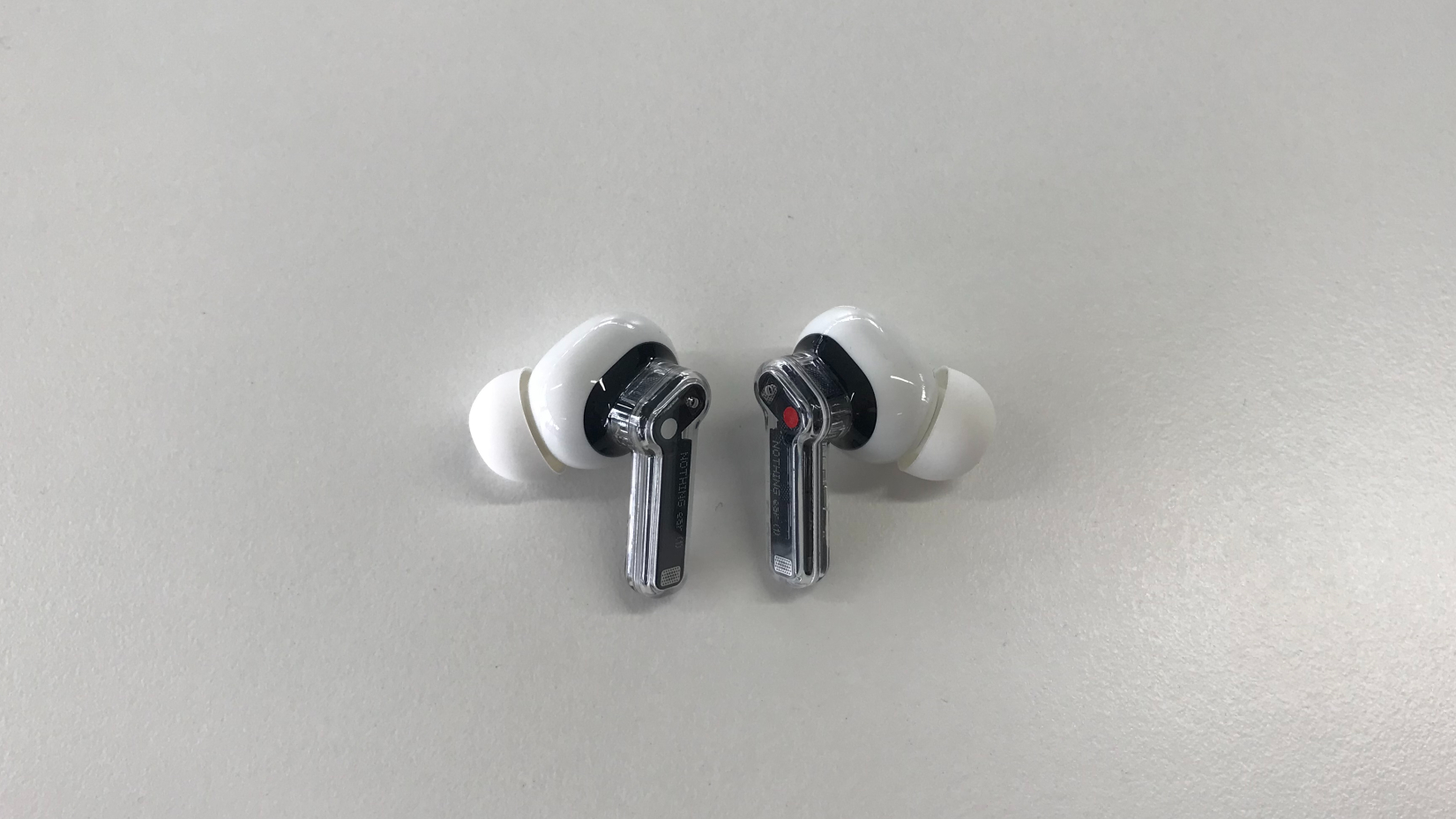Nothing's inaugural Ear (1) earbuds were, let's face it, a case of style over substance sonically.
Glossy images of Nothing’s futuristic near-transparent units, with very friendly lady bugs perched atop the case, suggested quality and detailed workmanship – and there's no denying that due care an attention was taken in making them look good.
The feature set – including Nothing's commendable new app – was better still, and the Nothing Ear (1) Black Edition brought Bluetooth 5.2 and improved the ANC to levels rarely seen at that price.
IPX4 splash-proofing was also a nice touch, and the little red dot on the right earpiece made me wonder why other manufacturers don't offer this simple embellishment, but sound quality is ultimately the making or breaking of a set of wireless headphones and here, Nothing Ear (1) still fall short of the best wireless earbuds in terms of timing and neutrality across the frequencies, as well as for bass grip and accuracy.
I tested the original Nothing Ear (1) earbuds and found the sonic performance far from perfect. Switch to Cambridge Audio’s Melomania 1 Plus, (currently available for much, much less), the bass is more impactful and zealous, making the Ear (1) feel altogether laid-back and languorous timing-wise. While expansive, the Ear (1) suffers from tubbiness through the lower registers and lacks precision in direct comparison.
That said, I truly think Carl Pei's Nothing is on to something, and if the recently-leaked Ear (1) Stick earbuds, tipped to launch after the much-hyped phone (1), are anything to go on, Pei's slick startup can finally start to take aim at Apple's AirPods – if it can only sort out these key areas.
And I'm leaving the aforementioned sound quality to one side – we've said all we need to say there. So let's begin.

1. Multipoint support
Although connectivity has been improved in the most recent Black Edition update, thanks to the use of Bluetooth 5.2, you still cannot count on any multipoint support here – and the best noise cancelling earbuds of 2022 (including Honor's Earbuds 3 Pro) do now offer the feature – and your AirPods will switch seamlessly between whichever Apple source device you're using at the time.
Surely, as Nothing's ecosystem grows, seamless switching from music on your Nothing phone to a meeting on your Nothing tablet will be of paramount importance to the busy professional – and also to the rest of us.
Also, there's currently no or aptX/LDAC codec support for better-quality streaming over Bluetooth, something we hope will come with the new Nothing earbuds.
2. Better transparency mode
The noise cancellation in Nothing's most recent, refreshed earbuds is much improved, although it comes at the expense of the battery life because now you only get about four hours from one charge with ANC on and the volume at a middling level.
But what does need work a little more readily is the transparency profile – because it can be bettered. Yes, cars and voices of passers-by are slightly more available to a listener when deploying this mode (and without the disconcerting wind-tunnel effect some budget-conscious propositions fall foul of) but there's certainly still room to bring it up to snuff against the class-leaders at the level – and here, we'd point you towards the Sony WF-SP800N. (You're welcome).

3. Scope to tweak the EQ levels
Currently, Nothing's likeable app only offers you 'balanced', 'more treble', 'more bass' or 'voice' EQ presets – and during my own testing, switching between these profiles sometimes made one earbud lose its Bluetooth connection (remember though, I tested the original 2021 release).
Furthermore, even in the new updated Nothing Ear (1), these profiles aren't manually tweakable.
The option to customize the sound to your liking using a three- or even five-band equalizer tab would likely level up the personal audio performance here considerably.
4. Better on-ear touch controls
Ear (1)’s touch controls can be customised in the slick Ear (1) app for iOS or Android devices, which features the same glorious retro digital typeface that's printed on the case and the stem of the buds.
Along with the two visual themes, the option of turning off wearer detection and the useful Find My Earbud feature (which emits a sound from the earbuds, for easier location if one has fallen down the back of the couch, say) you'll see a picture of the Ear (1) above two bubbles: ‘hear’ and ‘touch’ – and it's the Touch tab I want to focus on now, since this is where you get the opportunity to customize what happens when you triple-tap or long-press either earpiece.
I like to tailor it so that triple-tapping the left bud skips back a track, triple-tapping the right skips forward, and long-pressing scrolls between noise-cancelling profiles. Interestingly, a single tap performs no function here, probably to avoid accidental track pausing when placing them in your ears but, sadly, I have found double-tapping to play and pause tracks resoundingly hit and miss.
In addition, volume adjustments can allegedly be made by swiping up and down the stem of either earpiece, but again, it's difficult to actually make this happen – especially without dislodging one of the earpieces from my ears.
Okay, at this level, digging out my phone to alter playback is hardly a deal-breaker, but if on-ear controls are included, it's reasonable to expect them to work at least most of the time…
If you're out there, Nothing, I cannot wait to test the new Ear (2) earbuds, or whatever they might be called – I feel like we could really be something, you know?
Source: TechRadar